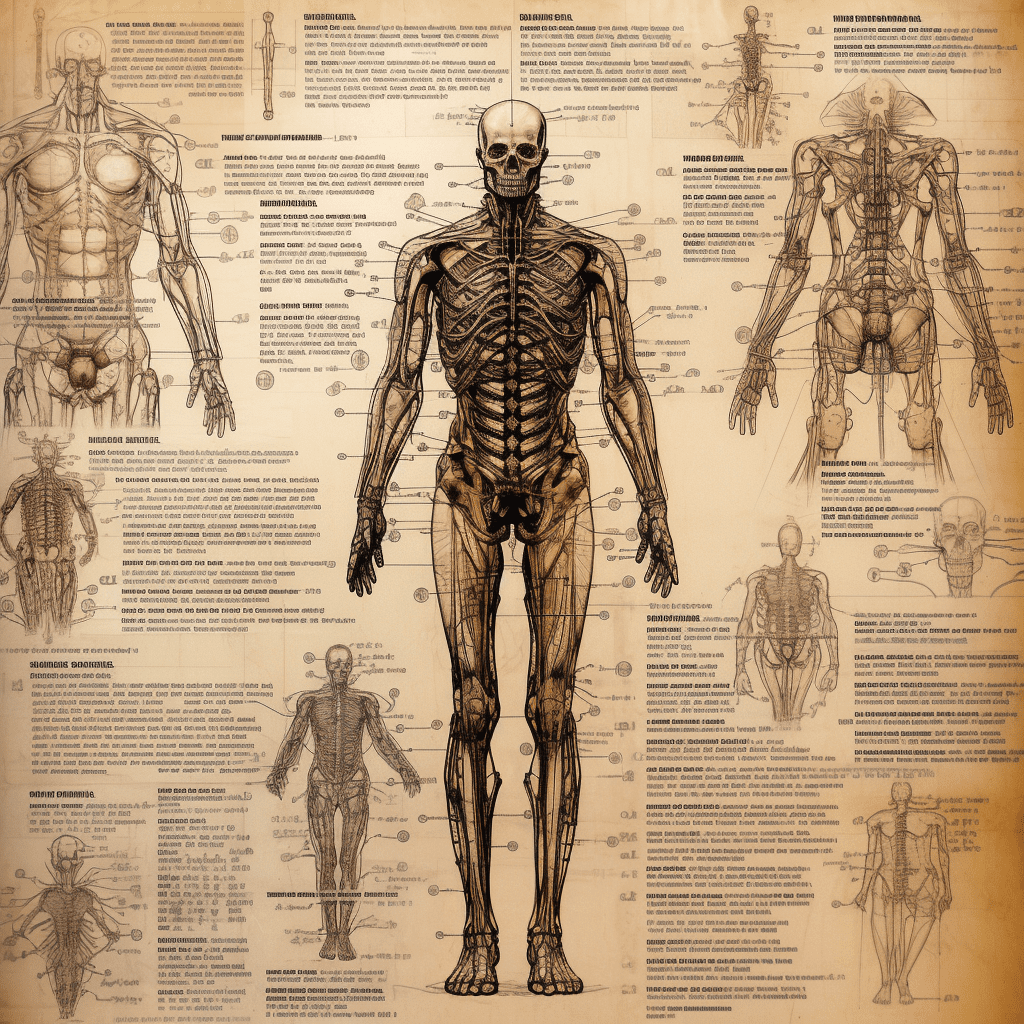Women’s Prostate: Fact or Fiction?
 2 years ago
By John Lewis Elopre
2 years ago
By John Lewis Elopre

In the realm of human anatomy, the prostate has long been associated with men and their reproductive health. However, there’s a lingering question that has intrigued many: Do women have a prostate? This article delves into this fascinating topic, exploring the truth behind the concept of a women’s prostate, its anatomy, and the potential implications.
When discussions arise concerning human anatomy, the prostate is conventionally attributed to males due to its role in male reproductive health. However, recent scientific explorations have sparked curiosity about the possibility of women having a similar structure.
The Male Prostate: A Brief Overview
Before delving into the concept of a women’s prostate, it’s essential to understand the male prostate’s functions. The prostate is a small gland located near the bladder, playing a crucial role in the production of seminal fluid. It has garnered attention primarily for its role in male sexual health and reproduction.
Unraveling the Myth: Women’s Prostate
Historical Context
Historically, the idea of women having a prostate-like structure dates back to ancient medical texts. However, these notions were often overshadowed by the extensive study of male anatomy. This historical oversight has contributed to the prevailing misconception that the prostate is exclusive to males.
Terminology Debate
The terminology surrounding a potential female prostate has sparked debates in the medical community. Some researchers refer to the female prostate as “Skene’s glands,” named after Alexander Skene, who first documented them in the late 19th century. This nomenclature emphasizes the gland’s unique nature while acknowledging its potential parallels with the male prostate.
Female Reproductive System: Structure and Functions
Contrary to common belief, women possess structures analogous to the male prostate. Skene’s glands, located near the urethra, have captured the interest of scientists and researchers due to their potential role in female sexual health.
The Role of Skene’s Glands
Skene’s glands are believed to contribute to female sexual pleasure and lubrication. These structures are positioned in proximity to the urethra and are hypothesized to produce fluids that aid in sexual activity and lubrication.
Parallels with the Male Prostate
Scientific findings have unveiled intriguing similarities between Skene’s glands and the male prostate. Both structures contain ducts that open into the urethra, suggesting potential functional parallels.
Scientific Studies and Evidence
Research on Skene’s Glands
Scientific exploration into Skene’s glands has intensified in recent years. Researchers have conducted studies to analyze the composition and function of these glands, shedding light on their potential contributions to female sexual response.
Comparative Anatomy Findings
Comparative anatomy studies have provided valuable insights into the potential evolutionary origins of Skene’s glands. By examining similar structures in other species, researchers aim to better understand the purpose and significance of these glands in humans.
Common Misconceptions
Confusion and Misinformation
The lack of awareness surrounding Skene’s glands has led to confusion and misinformation regarding women’s prostate-like structures. Many people remain unaware of the existence and potential functions of these glands.
Public Perception vs. Scientific Reality
Addressing the gap between public perception and scientific reality is crucial. Educating the general population about the presence and significance of Skene’s glands can dispel myths and promote accurate understanding.
Potential Functions of Skene’s Glands
Fluid Secretion and Lubrication
One of the proposed functions of Skene’s glands is fluid secretion, contributing to lubrication during sexual activity. This lubrication enhances comfort and pleasure, potentially impacting overall sexual satisfaction.
Orgasmic Sensations
Skene’s glands have also been linked to orgasmic sensations in some women. The glands’ stimulation may contribute to intensified pleasure during sexual climax.
Medical Significance and Health Implications
Skene’s Glands-Related Conditions
Just as the male prostate is associated with various health conditions, Skene’s glands can also be subject to disorders. Infections or inflammation of these glands can lead to discomfort and potential health issues.
Diagnostic Challenges and Solutions
Diagnosing Skene’s glands-related conditions presents challenges due to their relatively lesser-known nature. Medical professionals must be vigilant in recognizing and addressing issues related to these glands.
Addressing the Knowledge Gap
Importance of Education
To bridge the gap between myth and reality, education plays a pivotal role. By disseminating accurate information about Skene’s glands, society can enhance its understanding of female reproductive anatomy.
Encouraging Open Dialogue
Promoting open discussions about female reproductive anatomy is essential. Creating a space for conversations about topics such as Skene’s glands can empower individuals to seek knowledge and engage in informed conversations.
Conclusion
In the journey of understanding human anatomy, the notion of a women’s prostate has emerged from the shadows of historical oversight. Skene’s glands, with their potential contributions to female sexual health and pleasure, challenge conventional perceptions. Bridging the gap between myth and reality requires education, dialogue, and scientific exploration. By unraveling the complexities of the female reproductive system, we inch closer to a more comprehensive understanding of human anatomy.
FAQs
Are Skene’s glands exclusive to women? No, Skene’s glands are structures found in people with female reproductive systems.
Do Skene’s glands have any medical significance? Yes, Skene’s glands can be associated with health conditions, and infections can occur.
Can stimulation of Skene’s glands enhance sexual pleasure? Some studies suggest that stimulation of these glands may contribute to heightened sexual pleasure.
Are Skene’s glands well-researched? Research on Skene’s glands has increased, but more studies are needed for a comprehensive understanding.
How can society overcome the stigma surrounding discussions about female anatomy? Open conversations, accurate education, and challenging societal norms can help eliminate the stigma associated with discussing female reproductive anatomy.

Navigating the Complex World of Global Regulatory Affairs in Oncology
In today's fast-paced global pharmaceutical landscape, the regulatory affairs sector plays a pivotal role in ensuring the safety, efficacy, and market access of oncology drugs. As the demand for innovative cancer therapies continues to grow, understanding the intricacies of global...
2 years agoNavigating the Complex World of Global Regulatory Affairs in Oncology
In today's fast-paced global pharmaceutical landscape, the regulatory affairs sector plays a pivotal role in ensuring the safety, efficacy, and market access of oncology drugs. As the demand for innovative cancer therapies continues to grow, understanding the intricacies of global...
2 years ago
The Vital Role of Institutional Review Boards (IRBs) in Oncology Research
In the world of medical research, ethics play a paramount role. Researchers, especially in fields like oncology, are constantly striving to find innovative solutions and treatments to combat cancer. However, these advancements must be achieved within the boundaries of ethical...
2 years agoThe Vital Role of Institutional Review Boards (IRBs) in Oncology Research
In the world of medical research, ethics play a paramount role. Researchers, especially in fields like oncology, are constantly striving to find innovative solutions and treatments to combat cancer. However, these advancements must be achieved within the boundaries of ethical...
2 years ago
Data Privacy and Security in Oncology Trials
In today's digital age, data privacy and security have become paramount concerns across various industries, including healthcare. Within the realm of clinical research, particularly in oncology trials, safeguarding patient data is of utmost importance. This article delves into the critical...
2 years agoData Privacy and Security in Oncology Trials
In today's digital age, data privacy and security have become paramount concerns across various industries, including healthcare. Within the realm of clinical research, particularly in oncology trials, safeguarding patient data is of utmost importance. This article delves into the critical...
2 years ago